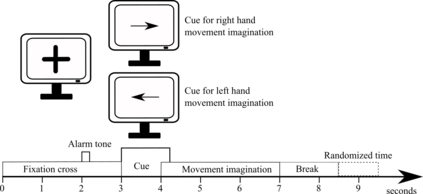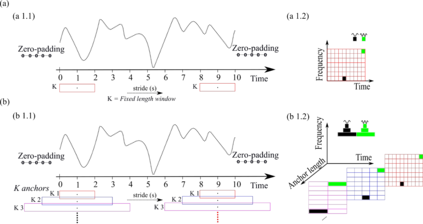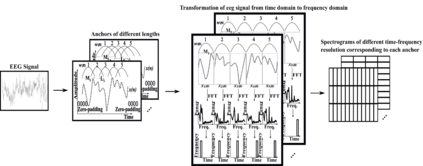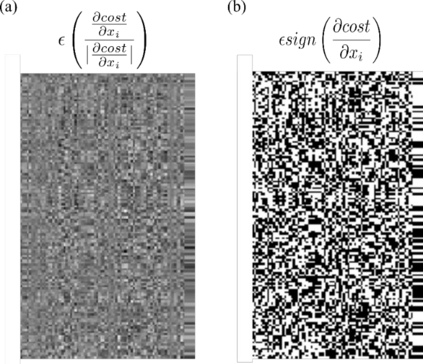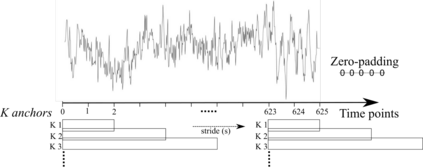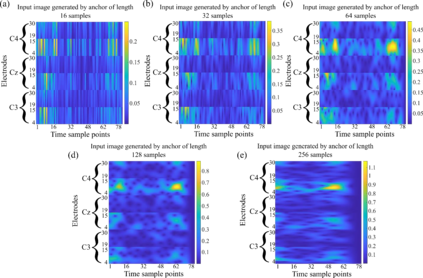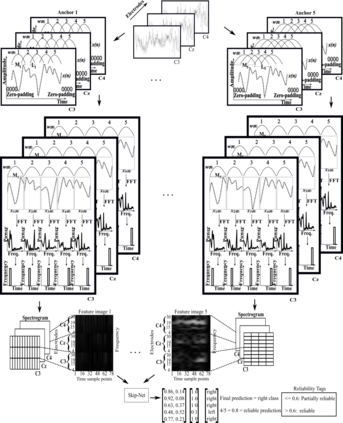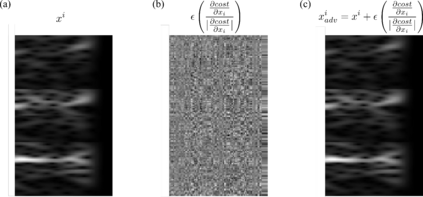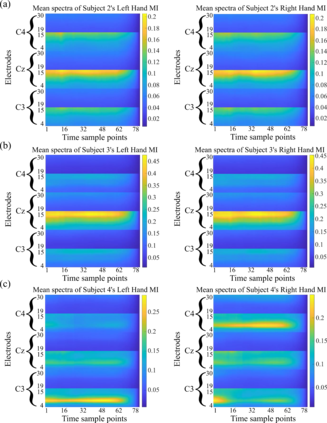Brain-computer interfaces (BCIs) enable direct communication between humans and machines by translating brain activity into control commands. EEG is one of the most common sources of neural signals because of its inexpensive and non-invasive nature. However, interpretation of EEG signals is non-trivial because EEG signals have a low spatial resolution and are often distorted with noise and artifacts. Therefore, it is possible that meaningful patterns for classifying EEG signals are deeply hidden. Nowadays, state-of-the-art deep-learning algorithms have proven to be quite efficient in learning hidden, meaningful patterns. However, the performance of the deep learning algorithms depends upon the quality and the amount of the provided training data. Hence, a better input formation (feature extraction) technique and a generative model to produce high-quality data can enable the deep learning algorithms to adapt high generalization quality. In this study, we proposed a novel input formation (feature extraction) method in conjunction with a novel deep learning based generative model to harness new training examples. The feature vectors are extracted using a modified Short Time Fourier Transform (STFT) called anchored-STFT. Anchored-STFT, inspired by wavelet transform, tries to minimize the tradeoff between time and frequency resolution. As a result, it extracts the inputs (feature vectors) with better time and frequency resolution compared to the standard STFT. Secondly, we introduced a novel generative adversarial data augmentation technique called gradient norm adversarial augmentation (GNAA) for generating more training data. Thirdly, we investigated the existence and significance of adversarial inputs in EEG data. Our approach obtained the kappa value of 0.814 for BCI competition II dataset III and 0.755 for BCI competition IV dataset 2b for session-to-session transfer on test data.
翻译:脑-计算机界面(BBIS)通过将大脑活动转化为控制指令,使得人类和机器之间能够直接沟通。EEG是神经信号最常见的最常见的神经信号来源之一,因为其价格低廉和非侵入性质。然而,对EEEG信号的解释是非三角的,因为EEG信号的空间分辨率低,而且往往被噪音和工艺品扭曲。因此,对EEEEG信号进行分类的有意义的模式可能是深层隐蔽的。如今,最先进的直线性能深层次学习算法已证明在学习隐藏的、有意义的模式方面相当有效。然而,深层次学习算法的性能取决于所提供的培训数据的质量和数量。因此,更好的投入形成(速度提取)技术和基因化模型可以使深层次的算法能够适应高通用质量。在这项研究中,我们提出了一个新的基于标准的基于深度学习的精度测模型模型,以便利用新的培训范例。我们用经修改的短期变换(STFT) 来提取特性矢量算出短期变换值(STFTI) 和不断变换数据结果。



